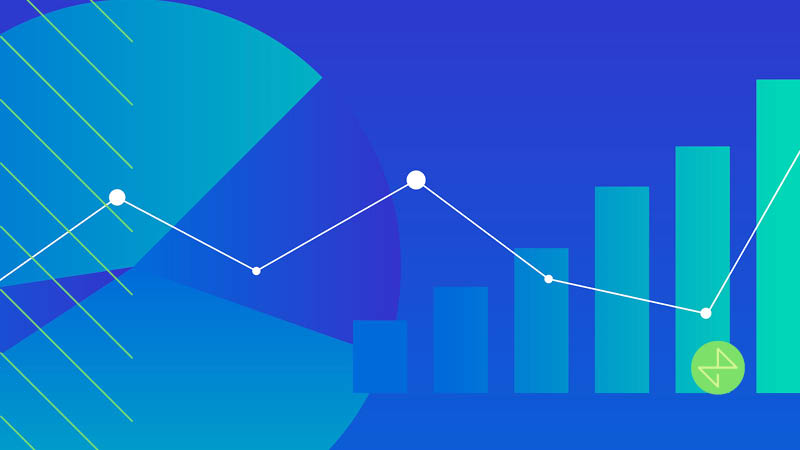Data Draws the Big Picture
In the current marketing landscape, gathering and effectively employing consumer data is no longer a luxury, but a necessity. With a stunning amount of raw data constantly being amassed by a variety of new tools, the amount of campaign information accessible to marketers has grown at an exponential rate.
Between 2010 and 2020, the amount of data utilized by marketers increased from 1.2 trillion gigabytes to 59 trillion gigabytes. While this is certainly an impressive statistic, it does not consider the ways in which that data was communicated.
For the effort that your business is putting into collecting and maintaining a database, you should be able to obtain an equal or greater amount of value from the insights it gathers. Many of today’s big data visualization software offerings are extremely intuitive and easy to use; however, to obtain the most actionable insights, you and your team must exercise careful and considerate planning. Moreover, you must communicate your insights into an easy-to-understand format— and the best way to do this is by utilizing data visualizations.
What is Data Visualization, and How Does It Work?
Humans are visual learners. It is more natural to understand and synthesize shapes and colors in our minds than it is to comprehend words on a page. This phenomenon is known as “picture superiority.” Thus, being able to create easily understandable data-driven graphics and visual aids is essential as a marketer. Fortunately, current technology means you don’t have to be too much of a visual artist to create good-looking graphs and infographics. What you do need is the ability to be precise in your targeting, and in determining which data you will transform into these infographics.
The accuracy of your visualizations will rely on two separate factors: the nature of the data you collect and the skill of your team members. When looking to create a new visualization, the first thing to do is validate your data. Consumer data can come from a variety of sources, and some attributes are prone to getting lost in translation as it all amalgamates into your main database. Making sure you know where your data comes from and what it looks to measure is essential to create accurate visualizations.
Storytelling with Data: Planning Your Approach
Once you know what your data has recorded, it’s time to consider what you want your visualization to measure. One strategy for this could be coming up with a list of questions that you would ideally like your data to answer. This may seem time-consuming; however, this critical-thinking exercise is one of the most important steps in the visualization process. It is equally important to keep an open mind as you examine your data. While marketers may have an idea of the story they want to tell, it is more important to take the extra time to look at your data away from your biases and consider it objectively. Look into each of the insights that you find and ask yourself what they might suggest on a wider scale.
This information will help in the development of a thesis for your data. By testing this thesis against your data, even if it proves untrue, you may yield surprising insights. In addition, these stress-tests will strengthen and help you to refine what you’re looking to measure. Even data that ultimately goes against your thesis can be useful and may provide a new perspective within your industry.
Big Data Visualization: Creating Your Graphics
With your chosen insights now well-defined, it is time to input your data into your visualization software. In the designing phase, simplicity is key. Many designs may look aesthetically pleasing but are more difficult to draw insights from. As a rule, it is best to stick with the basics—those being bar charts, line charts and pie charts. With a simpler base, your data will come across clearly, and your team can exercise their creativity through the choice of images and eye-catching color to draw attention to the visual. Brief descriptions can also be strategically utilized to compliment your graphics and make them easier to understand.
In creating your visualizations, you’ll want to ensure that all your disparate pieces of information are brought together neatly in your visualization software. This will ensure that you get a cohesive and holistic picture of how ad units are performing as well as trends. These insights will reveal a holistic picture, tell a story, that will reveal how moving ahead you can engage with target audiences best.
Using Data Visualizations to Uncover Critical Insights
Once you’ve created your graphics, it is important to not forget about them. Having predictive capabilities is vastly profitable, and the best-collected data can reflect the trends within an industry at large. For example, the data you collect and analyze may hold insights about consumer purchase behavior, or a stall point that can inform future campaigns. Similarly, keep an eye out for any anomalies in your data, as these can also provide strategic insights for future campaign planning.
When they are successfully researched, planned, and executed, data-driven graphics can add a wealth of value to your presentations, and can be major assets in conveying information within your business and to your external customers. Taking full advantage during the planning stage will give you the most valuable and actionable insights, going forward. Contact us to learn how data visualization can help you drive performance.



